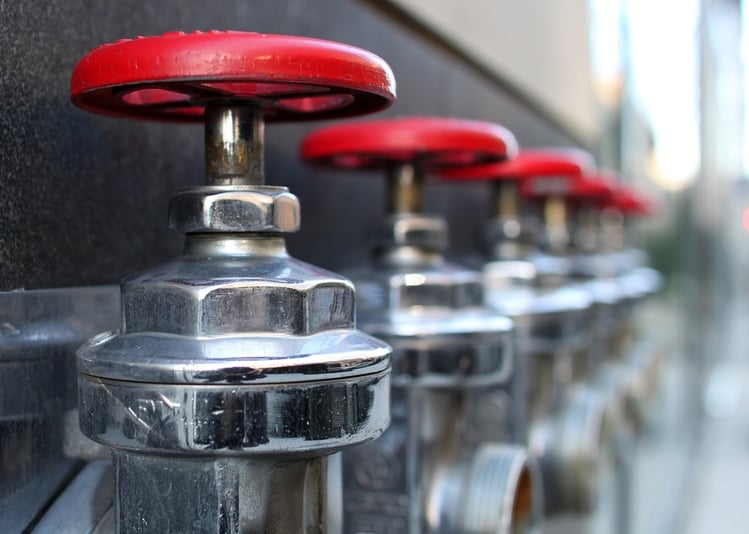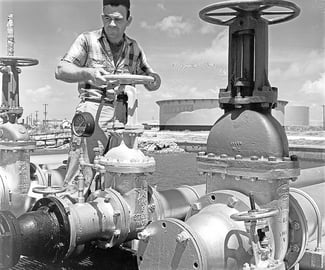The History of Valves
- Home
- Team EJP Blog
- The History of Valves
- Jun 10, 2015 7:11:00 AM
- Everett J. Prescott

Since man has begun creating cities and cultivating crops for farming, there has been a need to control the flow of water. Even prior to the first actual pipe systems (the aqueducts), men and women would regulate the flow of water using branches, tree trunks and stones. However, the Romans were the first ones to create anything resembling a formal canal system—and are thus credited with creating the valve.
The first valves were made of a bronze material. They were very strong and designed for welding to the pipes already in place. These pipes were also bronze, or sometimes lead. The first valves were very simple in design, but effective. The body of the valve included a plug with a hole, a bottom support and a long levy for turning the plug. Many of these valves have been found throughout the Mediterranean region. These artifacts show the smart thinking that our Roman ancestors put into creating the water systems they used in these “modern” ancient towns.
Valves were also used in mid to upper class homes during these times too. An extremely primitive form of the diaphragm valve would allow for control of bathwater. The Romans could control not only the flow into the tub, but also the mixing of warm and cool water. Evidence also exists that there were early forms of check or backflow valves in existence. This would help to keep wastewater from mixing with the clean water supplies for the town. Around the same time, the first form of the butterfly valve is believed to have been created in or around Augusta—based on artifacts.
 The middle ages did not have much advancement in valves and water control, but the renaissance period would change everything that humans knew. Canals, irrigation systems and hydraulics all advanced greatly during this period of growth and change. Leonardo DaVinci was credited with a number of new designs and improvements to the old standards. His sketches included many great examples of renaissance-era valves.
The middle ages did not have much advancement in valves and water control, but the renaissance period would change everything that humans knew. Canals, irrigation systems and hydraulics all advanced greatly during this period of growth and change. Leonardo DaVinci was credited with a number of new designs and improvements to the old standards. His sketches included many great examples of renaissance-era valves.
The industrial revolution was the next big change to the valve and harkened in the modern era of this, deceptively simple, device. When Thomas Newcomen invented his steam machine, he needed new, improved valve works to regulate steam even during high-pressure scenarios. The lessons learned from steam engineering would go on to make valves for irrigation and plumbing much more effective.
Eventually, valves could be produced in great volume. The ability to make them on an assembly line would enable more and more communities, farms and individuals to use the different valves that were available. Valves became an important part of the automotive world too—as they are used in engines and other areas of the car.
Today, more and more styles of valves are available than ever before. With a variety of materials available, a flexibility that has never been seen exists. One may think that valve technology is complete, but this is actually far from the truth. One particular advancement that will likely have an effect on valves, irrigation and waterworks is the concept of additive manufacturing (3D printing). This could allow unique or highly specialized valves to be created “on demand”, making it much easier to repair or replace a specific valve.
While we do not know exactly what the future will hold, we can only look to the past to see that things will probably change in some way—likely within our lifetimes. For now, it is important to stay in touch with what the best and most effective valves available are. By doing that, you can assure you are getting the best for you, your organization and the community as a whole.

Free Valves and Tapping Sleeves Product Guide!
A free indepth product guide on our valves and tapping sleeves products. This guide includes:
- Insulation Information
- Parts Illustrations
- Available Products

Sources:
Photo credit: SMU Central University Libraries / Foter / No known copyright restrictionsPhoto credit: Mr.TinDC / Foter / CC BY-ND







